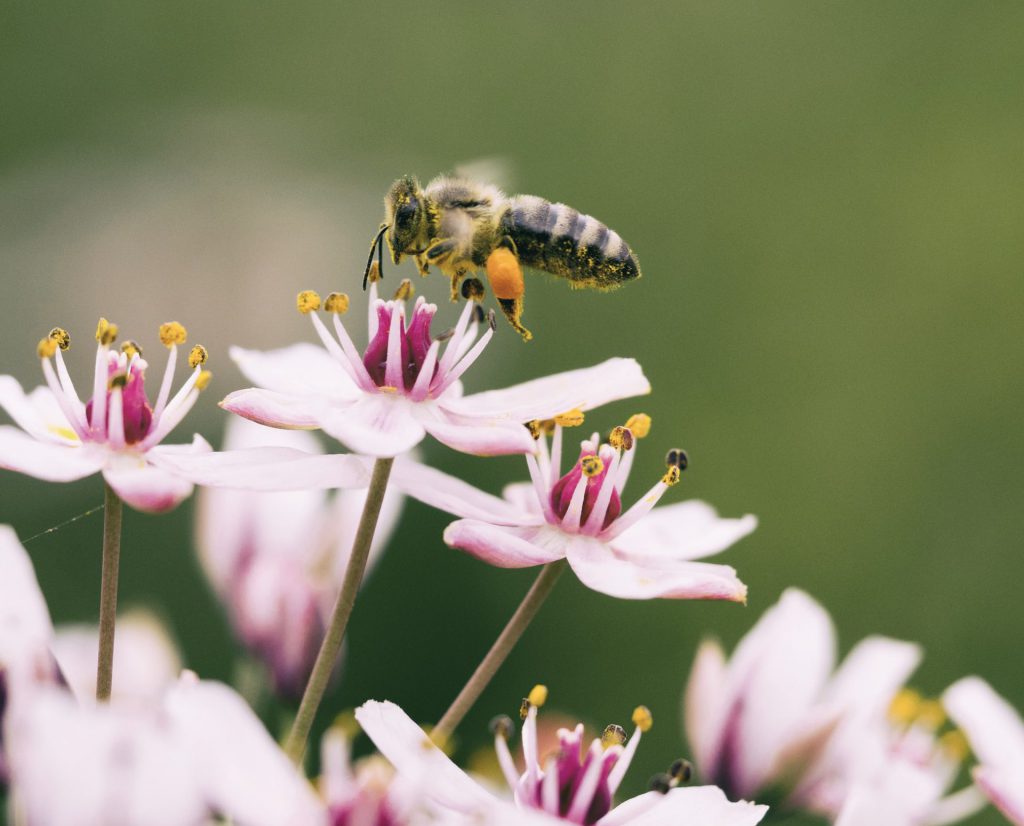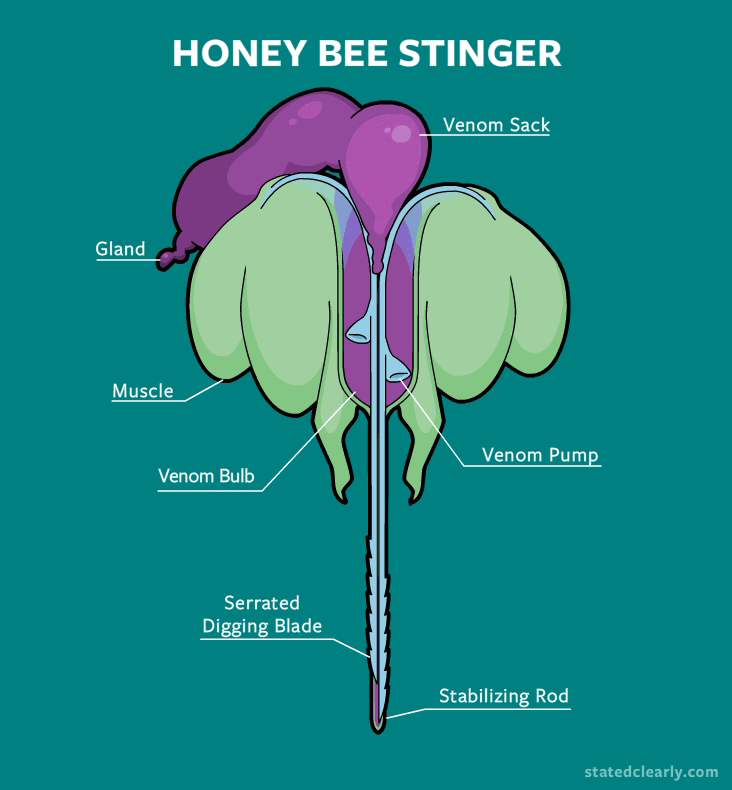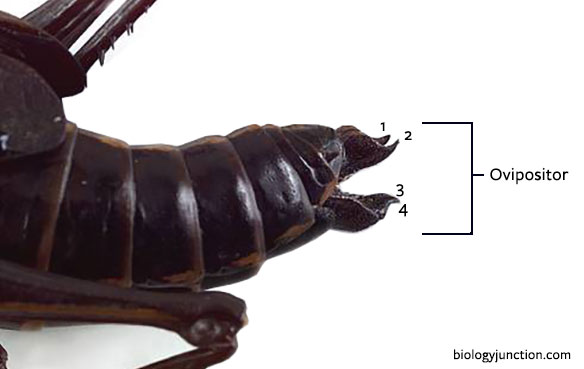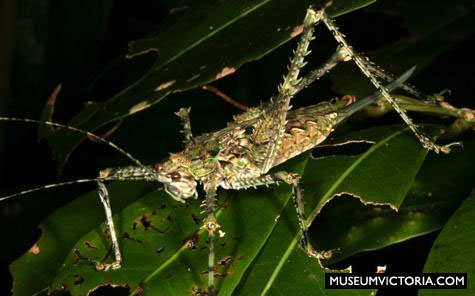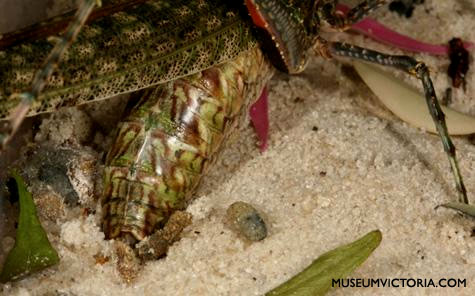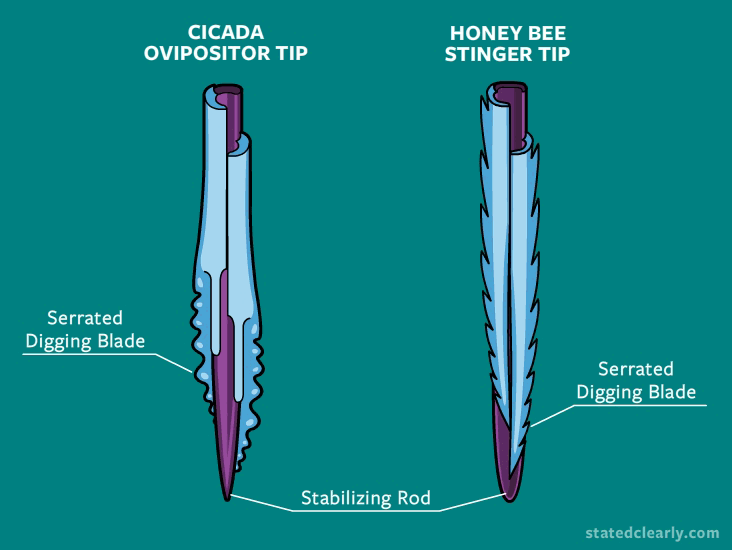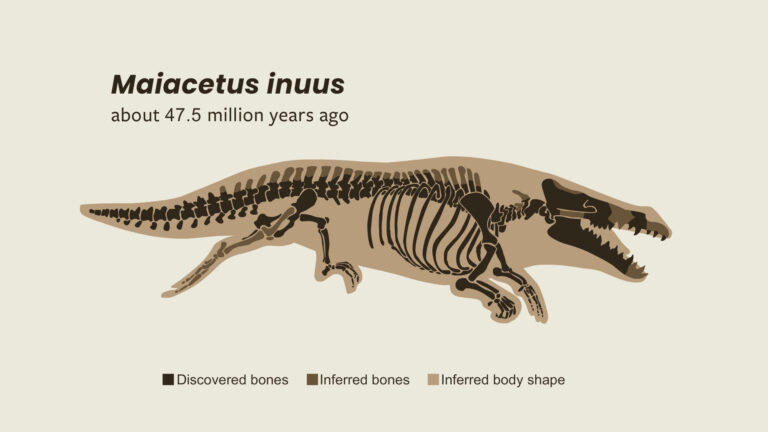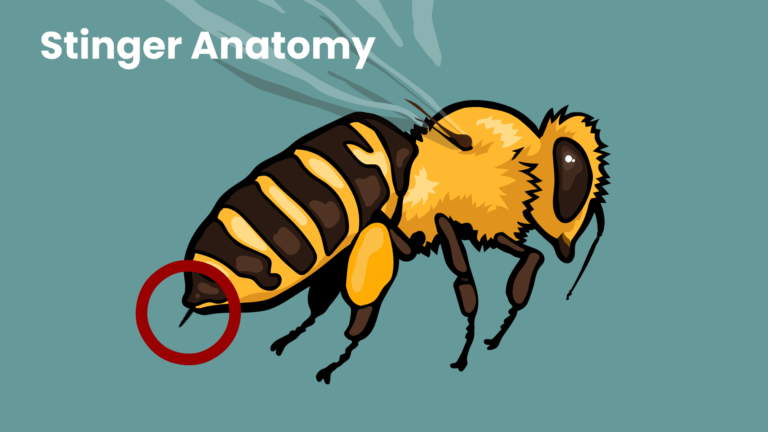If you want to see evidence for evolution you don’t need access to books, museums, documentaries, college courses, or even the internet. Just take a step outside and look around. There you’ll find countless examples of evolution, including my personal backyard favorite, bee stingers!
How did the bee stinger evolve?
The stinger of a honey bee is used as a weapon to defend the hive. It’s made of many parts shown and labeled in the animated diagram below. Take a moment to soak it all in before reading on.
The stinger consists of a venom gland, sack, and bulb; several muscles; two pumps inside the venom bulb; and three prongs (two serrated digging blades and a stabilizing rod for the blades to run on). The blades combine with the rod to form a hollow tube for venom delivery.
When the hive is attacked by other insects, bees can sting their foes multiple times, injecting venom and then removing the stinger safely after each stab. When attacked by larger animals—like birds or people—bees insert the stinger deep into the flesh, then fly away. The stinger tears off the bee’s body along with the venom gland, pumps, and muscles. The process kills the bee but allows the stinger to continue digging and squirting venom into the attacker insuring that every drop is used.
Check out this short video of an actual stinger which has just been released from a bee’s body.
If you’ve ever been stung you probably noticed that it’s surprisingly painful. As small as it is, the stinger is an extremely effective way for such a little critter to defend her hive against monstrous invaders like ourselves!
The stinger of a bee is what is known as an irreducibly complex structure. This means it is composed of several distinct parts, all of which must be working in unison for the stinger to do its job. How could this evolve? It seems too complex to have developed through the gradual step-by-step processes of evolution. What would the intermediates have looked like? What good is half a stinger?
Climbing Mount Improbable
Borrowing an analogy from the book Climbing Mount Improbable, our awe of the complexity of the stinger is comparable to the awe we might feel if we looked up at a treacherous cliff only to find a frail, blind man standing comfortably at the top. How did he manage to climb such a steep and dangerous mountain wall? It’s impossible! Some powerful, outside force must have intervened!
Or is there another explanation?
It’s completely reasonable to think that this sheer cliff, the straight vertical climb we see before us, is not the only pathway to the top. Perhaps around the backside of the mountain there are countless, gradual, wandering trails, each of which could have easily been taken by the blind man despite his limited abilities.
The same might be true for the pathway taken by evolution to produce the stinger. Though the fossil record for insects is spotty at best, we can examine the anatomy of the honey bee’s living relatives for clues.
What if the stinger didn’t start out as a stinger?
When studying the evolution of whales, we learned that whale flippers are modified arms and hands. Evolution often works by slightly changing old structures to give them new functions. In light of this, are there any structures on the bodies of non-stinging insects that are similar in anatomy to the stinger of a bee?
The answer is yes, ovipositors!
An ovipositor, or egg depositor, is a structure at the back end of most female insects which they use to dig with, then deposit their eggs. Simpler ovipositors (like the one above) consist of movable prongs extending from the tail end of the insect’s rear. In between these prongs is the opening where the egg comes out. In the photo above, 4 prong are visible but two more are inside. They’re used to dig in the dirt and carefully place each egg in the best possible spot.
The earliest ovipositors were likely simple blade-like or possibly hair-like projections near the egg canal that could have been used by insects to help aim where each egg would be laid. Evolution has modified that basic design to form an incredible array of different structures such as the sword-like ovipositor found on the prickly katydid below.
Notice her long sword-like ovipositor.
She uses it to stab deep into sandy soil where she deposits her eggs.
The katydid ovipositor is superficially similar in structure to the stinger of a bee but has more prongs (remember, stingers have one stabilizing rod and two serrated digging blades). Katydids lack venom but they do have an ovipositor gland which produces special fluids excreted along with the eggs.
Could it be that the stinger and venom gland are modified ovipositor parts? If so this would be a huge head-start for stinger evolution. Let’s see if there are any other insects with ovipositors that are even more stinger-like.
The ovipositor of this female cicada is a closer match!
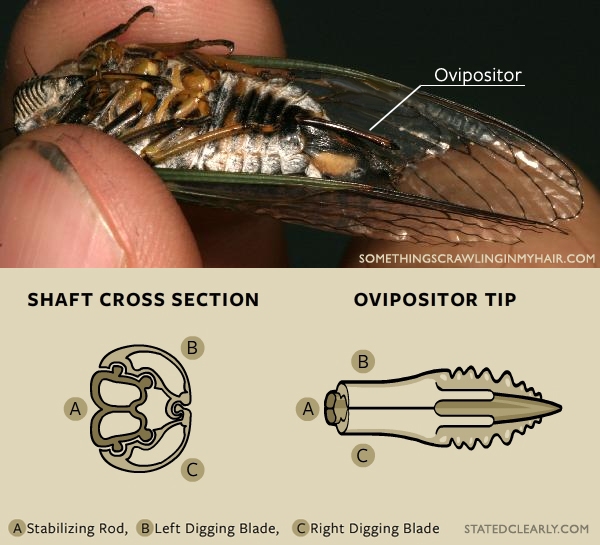
Though it’s not typically used as a weapon and its glands do not produce venom, the cicada ovipositor is almost identical to the stinger of a bee. Where the katydid had four prongs, the cicada has only three. The cross section reveals that in Cicadas, two of the original 4 prongs have fused together to create the stabilizing rod, while the other two have become serrated digging blades. She uses this contraption to burrow into the bark of trees where she deposits her eggs.
Below are close-up photos of a cicada ovipositor and a bee stinger for your comparison.
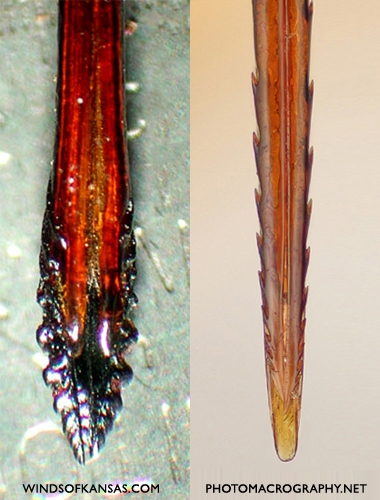
The ovipositors of many different insects, from sawflies to wasps, share a similar saw-like function. Some are used to insert eggs into plants, some into rotting fruit, others into live flesh! The ovipositor glands of different species secrete diverse variations of fluid which have evolved under differing selective pressures for different functions.
Evolution has modified the ovipositor glands of certain parasitic wasps to produce toxins that interact with the nervous systems of other animals. Below is a short video showing a wasp which finds an injured caterpillar and stabs it with her ovipositor, injecting it with paralyzing venom while laying eggs inside its body. The caterpillar will survive in the wasp’s burrow until the babies hatch and eat their living host from the inside out.
Nasty!
Other species of wasp do not have strong venom and are forced to wrestle dangerously with their victims. Knowing this, we can easily imagine how strong venom may have evolved. Mutations effecting the wasp’s ovipositor glands could have produced toxins which slightly stung their victims, making them easier to manage. These mutations would be favored by natural selection until full blown venom eventually evolved.
The overall anatomy of honey bees suggests that they share a relatively recent common ancestor with wasps. Though we don’t know exactly what this common ancestor was, it must have already had venom in its ovipositor glands.
If you’re still not convinced that the stinger of a bee is a modified ovipositor, consider this: only the sterile, female worker bees have serrated stingers, the kind which can tear off in the flesh of large invaders. Male bees have no stingers at all (which makes sense because male insects don’t have ovipositors) and the queen bee has a smooth stinger.
The evidence points to a blind wanderer
Evolution is like a blind and aimless wanderer, stumbling clumsily along its way with no end goal in mind. At first glance, the near perfection and irreducible complexity of the honey bee’s stinger seems too great an innovation for such a seemingly clumsy process to create. Stepping back, however, we discover footprints revealing a gradual, winding pathway to the summit.
First we have the evolution of a simple multi pronged ovipositor, similar to, but likely far simpler than what we find in many grasshoppers today. Second, the structure could have elongated in a similar fashion to those found in Katydids. Third, saw-like structures develop, allowing insects to lay eggs inside a variety of different materials, including the live flesh of plants and animals. Fourth, insects laying eggs in flesh began developing toxins in their ovipositor secretions until finally, we have a the stinger of a bee!
So what does all this mean? Next time you’re stung by a bee, remember this: You have just been stabbed by the modified reproductive organs of a tiny insect woman.
I’m Jon Perry and that’s evidence for evolution in your own backyard.
Stay curious!
